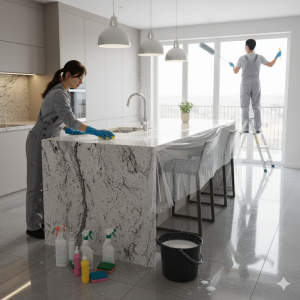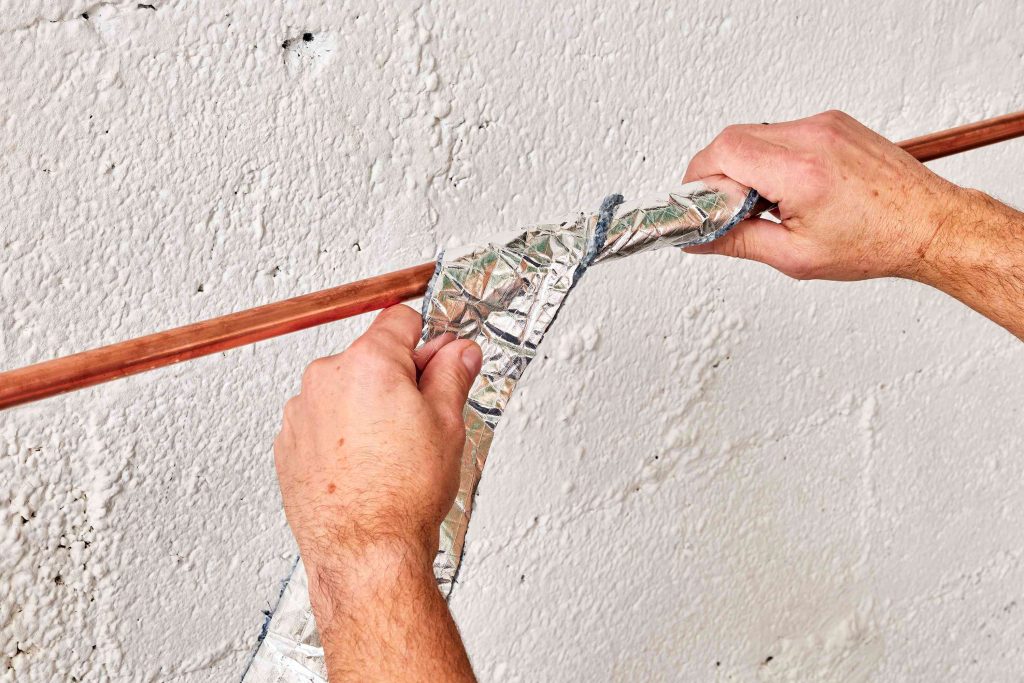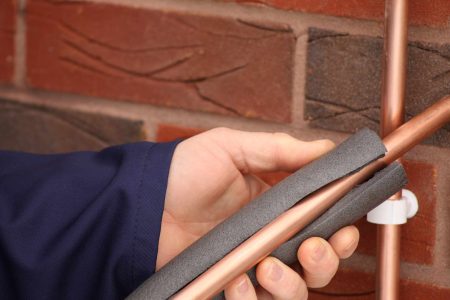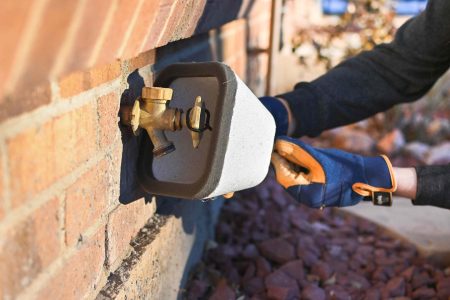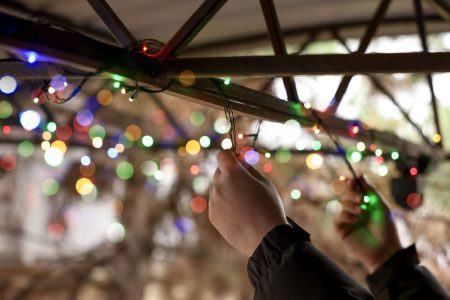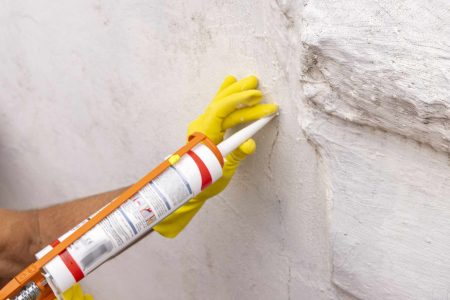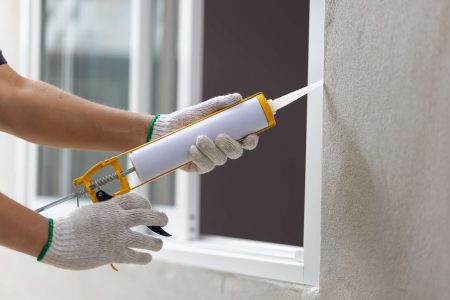Key Points
- Prepare your home before the first freeze with key maintenance and inspection tasks.
- These steps prevent costly winter damage and help your home stay warm, efficient, and safe.
- Combine simple DIY fixes with more complex projects that require professional help.
Before your area’s first freeze, make sure that your home is prepared. Insulating pipes or adding weatherstripping are simple and DIY-oriented. Repairing the roof or preventing ice dams are best left in the hands of pros.
We spoke to contractors and home exterior experts to learn about home maintenance before the first freeze.
Meet the Expert
- Michael DiMartino is SVP of Installations at Power Home Remodeling.
- Elizabeth Shavers is the General Manager of Oncourse Home Solutions.
- Dan Staupe is the co-owner of Compass Exteriors.
Examine and Repair the Roof
Your roof needs to be in good shape before the first freeze. Because the roof protects everything below, it should be the first area you check.
“Call in a professional to conduct a full roof inspection, including checking the age of your roof, or if materials are damaged or outdated,” recommends Michael DiMartino, of Power Home Remodeling
The pros will check for things like curling or buckling shingles. They will identify any roof stains and trace back the cause of the stains.
Pros will examine the roof system as a whole. A proper roof system should include ice and water shields, drip edges, ridge and intake vents, and a breathable vapor barrier.
Want more home reno project tips and inspiration? Sign up for our free daily newsletter for the latest how-tos, reno guides, and more!
Don’t Miss
Winterize Windows and Doors
Winterizing windows and doors is an important home maintenance task to emphasize before the first freeze.
Close up drafts before the cold weather sets in. “With all gaps that naturally occur around windows and doors, these are opportunities for the wind, cold, and dampness to seep through,” says Dan Staupe, with Compass Exteriors.
Add caulk to seal the gaps around the windows and doors to ensure that no cold air gets in and no warm air gets out. Thermal curtains or thick velvet curtains are a great help in keeping a house warm.
Seal Air Leaks
Before the first freeze, seal any air leaks around windows and doors. Even small gaps can let in cold drafts that make your heating system work harder than it needs to.
“Find air leaks by walking around your home and feeling for cool air near windows, doors, outlets, and vents,” says Elizabeth Shavers, with Oncourse Home Solutions.
Fix drafts with weatherstripping, caulk, or foam tape. Air sealing a home is a simple DIY way to keep heat in, reduce energy waste, and help rooms feel comfortable.
Clean Gutters
Clean the gutters to ensure they’re in perfect working condition for the upcoming freeze.
Clogged, damaged, or faulty gutters can translate to water pooling on the roof or on the ground, severely damaging the roof and house foundation.
“With gutters, pull up your sleeves, get a ladder and an assistant, and start clearing them out from top to bottom,” advises Staupe.
Leaves or debris should be cleaned out. Expect to do more work if you have tree branches overhanging your roof, adds Staupe. Flush the gutter from top to bottom until debris exits the drainpipes.
Fix Damaged Siding
Inspect your home from all sides, no matter the type of siding: stucco, brick, cedar, cement board, or vinyl.
With areas that are cracked, missing, or loose, it’s important to repair before it gets too cold.
“Leaving any openings unaddressed or exposed to moisture or other elements can lead to mold, mildew, compromised sheathing, and other problems inside your home,” cautions DiMartino.
Insulate Plumbing Lines
Frozen pipes can lead to expensive repairs, especially in unheated areas like basements or garages. So, before the first freeze, insulate exposed plumbing pipes.
Wrap exposed pipes in foam insulation sleeves or heat tape before temperatures drop. Pay special attention to pipes along exterior walls or near drafty areas.
“If you plan to be away during a cold spell, shut off the main water supply and drain the water lines,” adds Shavers.
Check Attic Insulation
Ensure you have proper insulation in your attic and that it’s in good shape. This will improve the airflow throughout your home and prevent warm interior air from escaping to the outside.
“Having proper attic insulation is not only important for temperatures inside, but can also help prevent a nightmare from occurring on top of your roof,” says DiMartino.
As snow lies on your roof, a pattern of thawing and re-freezing can occur, explains DiMartino. If that ice forms along the edge of your roof, it creates an ice dam that blocks melting snow from draining off, leading to interior leaks.
Proper attic insulation and adding vents to your roof can prevent these ice dams from forming in the first place.
Read the full article here
